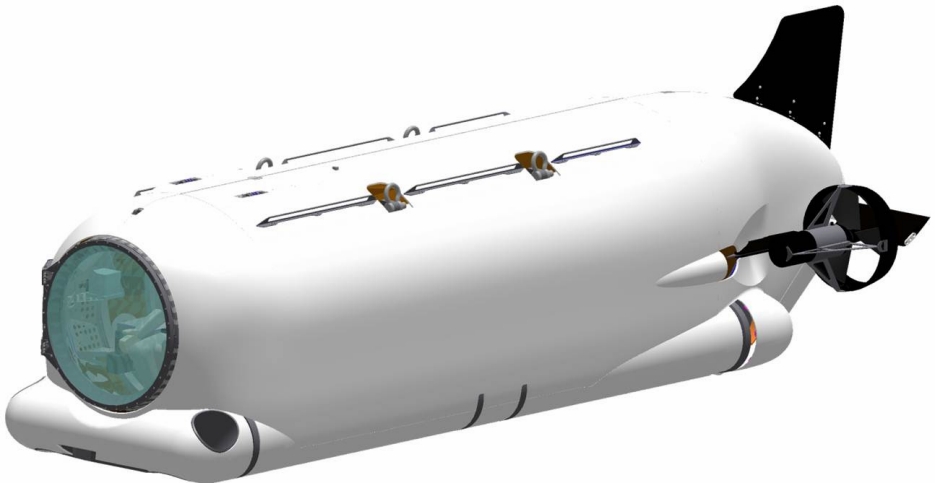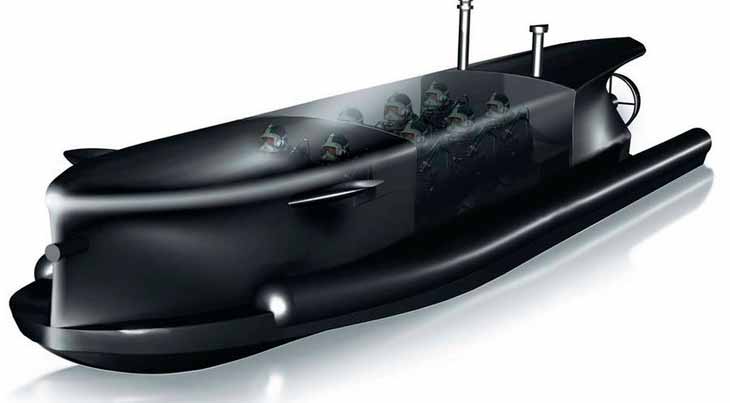Lockheed Martin is developing a minisubmarine to deliver special forces to the battlefield.

Lockheed Martin.
Lockheed Martin will collaborate with the US Special Operations Command (USSOCOM). The company will build for the military several devices representing a mini-submarine, designed for prompt delivery of special forces to the place of operation. The companysaid thisin a press release. The vehicles will be able to stay under water for about a day, will have a power reserve of 45 nautical miles (83 km) and move at a speed of 3 knots (approximately 5 km per hour). The length of the ultra-small submarine will be 7.25 m, two operators will manage it. On board will be able to accommodate six passengers.
Now, US special operations forces use a different type of underwater vehicles to deliver special forces to the battlefield - in military terminology, the transporter is called the Swimmer delivery vehicle ( SDV ). This device has comparable in size and speed parameters that Lockheed Martin offers in its contract, but thanks to its design features, the fighters are always forced to be literally “in the water” in scuba gears.
It looks like SDV.
The video above shows the SDV Mk.8. It moves at the expense of an electric motor on lithium-polymer batteries. Vertical and horizontal engines are needed to move under water in all degrees of freedom. On board, in addition to special forces, he has a light anti-submarine torpedo and several magnetic mines. For underwater navigation, a pulse radar and an inertial navigation system based on an Inertial Navigation System fiber optic gyroscope are used. There are also more colorful renders that give an idea of the SDV:
Lockheed Martin offers a different approach, giving the military extra comfort. The company calls its vehicles Dry Combat Submersibles (DCS, dry combat submersible vehicles), meaning that the fighters, while in such a submarine, will receive conditions comparable to a conventional submarine. The crew will not have to use scuba gear for breathing. During transportation to the desired point, they will be able to save forces for combat operations. In fact, you will have to wear scuba only at the very point of landing.
Of course, questions remain about the real comfort of being in DCS: the size of existing similar civilian apparatuses varies depending on the modifications. Lockheed Martin has two models - S301i and more advanced and with the best hydrodynamic characteristics of the S302. The height of the DCS hull will vary from 1.75 m to 2.34 m, and its length from 7.25 m to 9.36 m. This, together with the existing renderers, suggests that the passengers of the vehicle (six soldiers and two operators) will sit comfortably.

Existing civil DCS model, render. Lockheed Martin.
Such devices usually have a darker color and are made of carbon composite materials and reinforced fiberglass.

Swedish version of the SDV company DCE.
The total amount of the contract Lockheed Martin with the US Special Forces Command for the DCS project will leave $ 166 million. Cooperation in the water is successful, but recently it broke in the air. In October 2015, Lockheed Martin and Boeing were unable to conclude a contract with the US government to create a new generation strategic bomber, which should surpass the existing version of B-2. The contract amount is estimated at $ 80 billion. That contract was won by Northrop Grumman.
